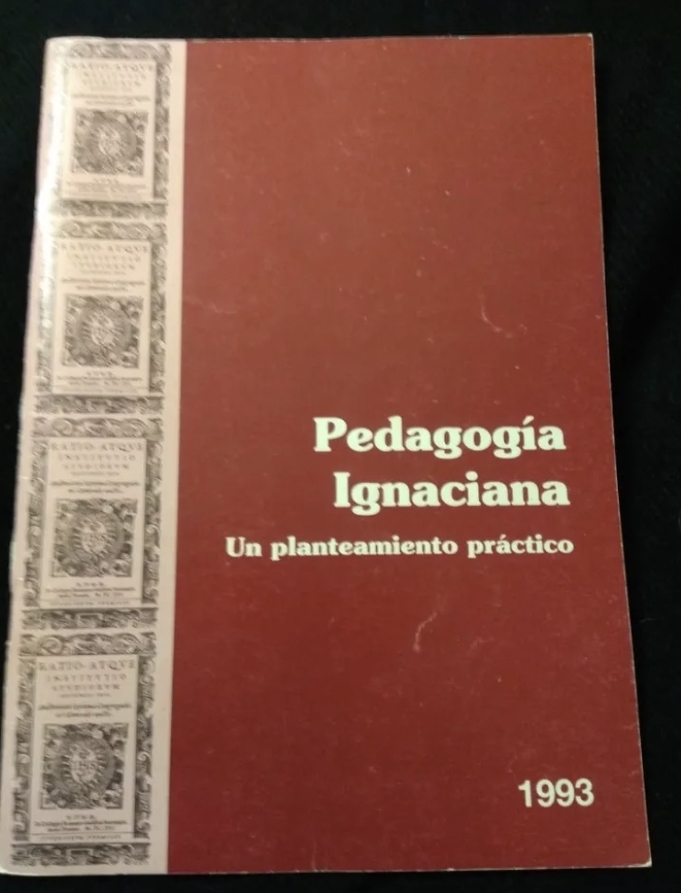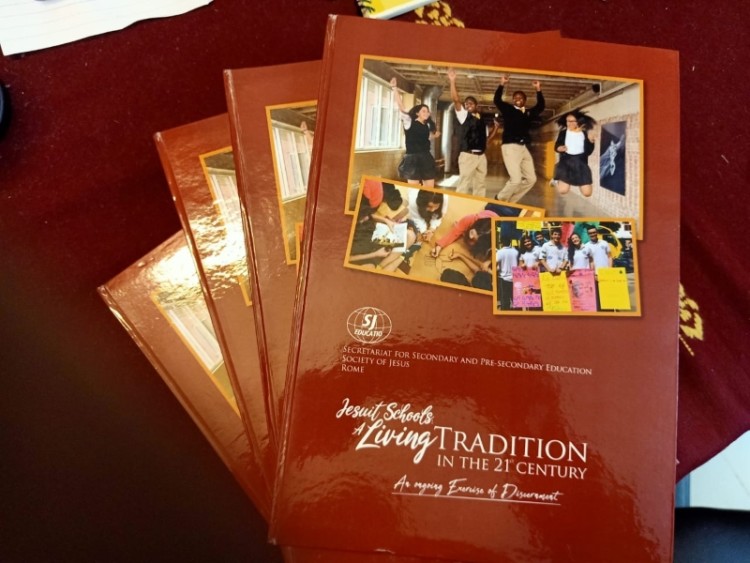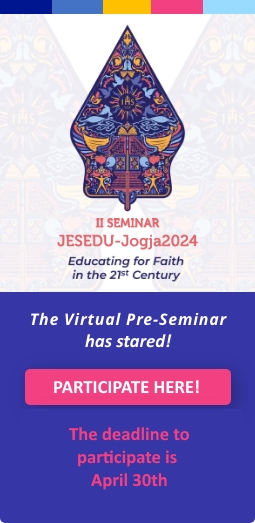“It was the best of times, it was the worst of times…
it was the spring of hope, it was the winter of despair” – Dickens No. 159
In 1986 the International Commission on the Apostolate of Jesuit Education (ICAJE) published the document The Characteristics of Jesuit Education. In his letter presenting the document, Fr. General Peter Hans Kolvenbach stated that this document “can give us a common vision and a common sense of our purpose”. This vision is “the well-rounded person who is intellectually competent, open to growth, religious, loving and committed to doing justice in generous service to the people of God”. (# 166) This document was received with great enthusiasm in the schools as it provided a sense of unity and a common goal which ultimately replaced the Ratio Studiorum of 1599.

However, the ICAJE soon received numerous requests for guidance on classroom pedagogy that would serve as a coherent embodiment of the 28 characteristics listed. Once again, the commission set to work and in 1993 published Ignatian Pedagogy: A Practical Approach, more commonly known as the IPP (Ignatian Pedagogical Paradigm). This new document proposed “some aspects of this pedagogy which serve to introduce a practical teaching strategy. The Ignatian pedagogical paradigm proposed here can help to unify and incarnate many of the principles enunciated in The Characteristics of Jesuit Education.” (# 2).
The document introduced the IPP as the way in which we could achieve the integral formation or human excellence which Fr. Arrupe, exactly 50 years ago in Valencia, Spain, had masterfully summarised in the phrase to become a person for others, following the example of Christ, the true person for others. In this sense, the IPP is the how, the way to achieve this purpose.

To this end, the document proposes 5 dimensions or elements to be taken into account in the teaching-learning process: context, experience, reflection, action and evaluation. The way in which these dimensions are present in the process may vary. The IPP does not propose a fixed sequence but rather some dimensions that Jesuit educators must always include in their work in order to promote a true process of growth and integral transformation of the person: taking into account the context in which learning takes place, that is, the context of the students and the wider context in which they are being educated. Taking this context into account is part of the cura personalis, that is, of the care, attention, and respect for each student as a unique human being in community.
The context creates the conditions for a real experience where an activity triggers a cognitive and affective process that generates new knowledge. However, learning does not end there. This experience must be accompanied by reflection which helps the learner to deepen the experience and thus reach a deeper and more critical level of learning. But “reflection in Ignatian Pedagogy would be a truncated process if it ended with understanding and affective reactions. Ignatian reflection, just as it begins with the reality of experience, necessarily ends with that same reality in order to effect it. Reflection only develops and matures when it fosters decision and commitment” (No. 60). In this way, the aim of the IPP is for the educational process to lead to action such as human growth based on a reflective experience that transforms the student and his or her environment. Of course, any educational process must always be accompanied by an ongoing evaluation that feeds back into the process, and which makes it possible to improve it and to detect areas in need of improvement. In this sense, evaluation is not only academic but integral, as it must be oriented towards the human excellence mentioned earlier.
What is the IPP not?
Much has been written about the IPP. However, it is important to discard some interpretations that may obscure its use or purpose. The IPP is not:
- A methodology that follows a 5-step sequence.
- A format or template for preparing or reporting on classroom lessons.
- The 5 dimensions of the IPP should not be considered as steps to be followed. It is true that paragraph number 32 in the document talks about steps, but in the overall context of the document it is clear that the term step (understood as a fixed sequence) is not appropriate to describe the dynamic relationship that should exist between these dimensions. See for example paragraph number 58 where the dynamic relationship between the different dimensions is explained.
What is the IPP?
- The IPP is a pedagogical style that was born out of and is nourished by the spiritual vision of Ignatius of Loyola expressed in the Spiritual Exercises. As a pedagogical style it can and should be combined with other pedagogies to achieve the goal of contributing towards the holistic education of students. “Over the centuries a number of other specific methods more scientifically developed by other educators have been adopted within Jesuit pedagogy insofar as they contribute to the goals of Jesuit education.” (# 8). Ignatian pedagogy, from the beginning, has been eclectic and has drawn from different methods and pedagogies, always using Ignatian spiritual experience as its ultimate selection criterion.
- In this sense, the 5 elements of the IPP can best be described as dimensions that should always be integrated with the pedagogical practices and methods used, whatever they may be. These 5 elements can be found in many active pedagogies today. In this sense what makes the IPP Ignatian is not these dimensions but the vision that nurtures them and the purpose they serve. This is why the IPP should always be read together with The Characteristics and now with the more recent A Living Tradition document (2019) which present the broader vision within which Ignatian pedagogy is embedded.
- The IPP is also “a model of how to proceed that promotes the goal of Jesuit education, a paradigm that speaks to the teaching-learning process, that addresses the teacher-learner relationship, and that has practical meaning and application for the classroom.” (#. 21, see also # 75).
- Additionally, the IPP is a tool to guide the educator in preparing the best conditions for learning and choosing the most relevant activities. “The paradigm has considerable potential for helping students to make connections across as well as within disciplines and to integrate their learning with what has gone before.” (# 73).
- The IPP constitutes, to use a profoundly Jesuit expression, “our way of proceeding in Jesuit schools as we accompany the learner on his or her journey of becoming a fully human person… knowing that it needs to be adapted and applied to our own specific situations.” (# 29).
- Finally, we can say that the IPP is, as its name indicates, a paradigm, i.e., a vision that provides the basis and model for articulating Ignatian pedagogy.
But is the IPP still relevant in today’s context?
The IPP was published 30 years ago. It is true that in many ways our context has changed. The Living Tradition document recognizes many of these new developments. We could even argue that the art and science of pedagogy has evolved enormously and today we know much more about how to create better learning conditions and develop better teaching methods. For example, advances in brain studies with neuro-didactics, new learning technologies, artificial intelligence, the internet, and many other advances mean that there are new pedagogical proposals that better integrate this new knowledge and these advances. So, is the IPP still relevant for our schools?
 I think the answer is yes. The IPP is still valid but only if we understand it in its true sense as explained above. If it is understood as steps, a template, or a methodology it has little to offer in the face of much more powerful methodologies today. If it is understood as a pedagogical style, model, guide and as our way of proceeding, it is still valid. An example may help to illustrate this point: how can I as a biology teacher, or as an educator in a team working with integrated pedagogical projects, apply the IPP? The first thing, in our pedagogical tradition, is to “shop around” and visit the pedagogical market to discern the best available methods and pedagogies for learning biology or participating in pedagogical projects. This can lead us to use neo-constructivist methodologies, multiple intelligences, or ‘smart schools’ approaches. But if we want to do it in the Ignatian style and in our pedagogical tradition, the IPP becomes an indispensable tool for this in two ways. Firstly, the IPP will help us to visit the educational supermarket with pre-defined criteria. We are not looking for just any ingredient, or the one that is currently in fashion… we are looking for ingredients that serve the purpose we are striving for in education and in our way of proceeding. The IPP serves as a fundamental criterion (together with The Characteristics and Living Tradition) to find these ingredients and not lose the Ignatian flavor. Secondly, the IPP helps us to integrate and “enculturate” these new ingredients, methods or pedagogies in a way that is appropriate to our tradition. In other words, we must use pedagogical projects from an Ignatian vision and practice. To this end, the IPP becomes a fundamental tool together with, as previously mentioned, the other two documents, The Characteristics and Living Tradition. Fr. General Sosa has explained it well: “The Living Tradition does not replace the previous documents; rather, it complements and updates them as an ongoing exercise of discernment. The three should be taken together as the contemporary framework of Jesuit Education.” (Letter presenting the Living Tradition document, 5 November 2019).
I think the answer is yes. The IPP is still valid but only if we understand it in its true sense as explained above. If it is understood as steps, a template, or a methodology it has little to offer in the face of much more powerful methodologies today. If it is understood as a pedagogical style, model, guide and as our way of proceeding, it is still valid. An example may help to illustrate this point: how can I as a biology teacher, or as an educator in a team working with integrated pedagogical projects, apply the IPP? The first thing, in our pedagogical tradition, is to “shop around” and visit the pedagogical market to discern the best available methods and pedagogies for learning biology or participating in pedagogical projects. This can lead us to use neo-constructivist methodologies, multiple intelligences, or ‘smart schools’ approaches. But if we want to do it in the Ignatian style and in our pedagogical tradition, the IPP becomes an indispensable tool for this in two ways. Firstly, the IPP will help us to visit the educational supermarket with pre-defined criteria. We are not looking for just any ingredient, or the one that is currently in fashion… we are looking for ingredients that serve the purpose we are striving for in education and in our way of proceeding. The IPP serves as a fundamental criterion (together with The Characteristics and Living Tradition) to find these ingredients and not lose the Ignatian flavor. Secondly, the IPP helps us to integrate and “enculturate” these new ingredients, methods or pedagogies in a way that is appropriate to our tradition. In other words, we must use pedagogical projects from an Ignatian vision and practice. To this end, the IPP becomes a fundamental tool together with, as previously mentioned, the other two documents, The Characteristics and Living Tradition. Fr. General Sosa has explained it well: “The Living Tradition does not replace the previous documents; rather, it complements and updates them as an ongoing exercise of discernment. The three should be taken together as the contemporary framework of Jesuit Education.” (Letter presenting the Living Tradition document, 5 November 2019).
Fr. Johnny Go SJ and Ms. Rita J. Atienza have published an important book that accurately reflects this ongoing exercise of discernment and in particular how the IPP can be integrated today with more contemporary pedagogical developments. In their book “Learning by Refraction: A Practitioner’s Guide to 21st Century Ignatian Pedagogy”, (Ateneo de Manila University Press, 2019) the authors present a contemporary interpretation of the IPP in dialogue with current pedagogical developments. The book represents a new eclectic exercise of discernment where new pedagogies are integrated from the Ignatian vision and put at the service of our mission in education. The book supports an updated IPP to help today’s learners to become transformative agents of themselves and their environment, true persons for and with others. Ignatian pedagogy encourages us to learn by doing and to always respond creatively to new contexts. Learning by Refraction makes it very clear that the IPP is still relevant and that it helps us to integrate new pedagogical proposals which serve to invite our students to become persons for and with others, following the example of Christ as explained by Fr. Arrupe 50 years ago. There is no doubt that the IPP is still relevant and that it continues to help us to move forward.
AMDG
[Original: Spanish]
